Tasty Tools: Assistive Technology in the Kitchen (Part 5)
Friday, September 29, 2017


By Jen Gosett, BS, CTRS, MATP Staff
In Part 4 of this series, we had gotten back from grocery shopping, put our goods away and were starting to prep food for the week (remember those oven eggs?). When I do my food prep for the week, it’s not typically right after I put all my food away (I’m usually tired & hungry and can get frustrated more easily. Anyone else feel that way?) 😉 When I start prepping, it’s helpful and less overwhelming for me if I start with a clean(ish!) kitchen: my sink is usually clear, random things on my counters are put away, etc. I’ve found that this helps me keep my motivation/keeps me on task because I’m solely focusing on food prep (rather than also cleaning & putting random things away).
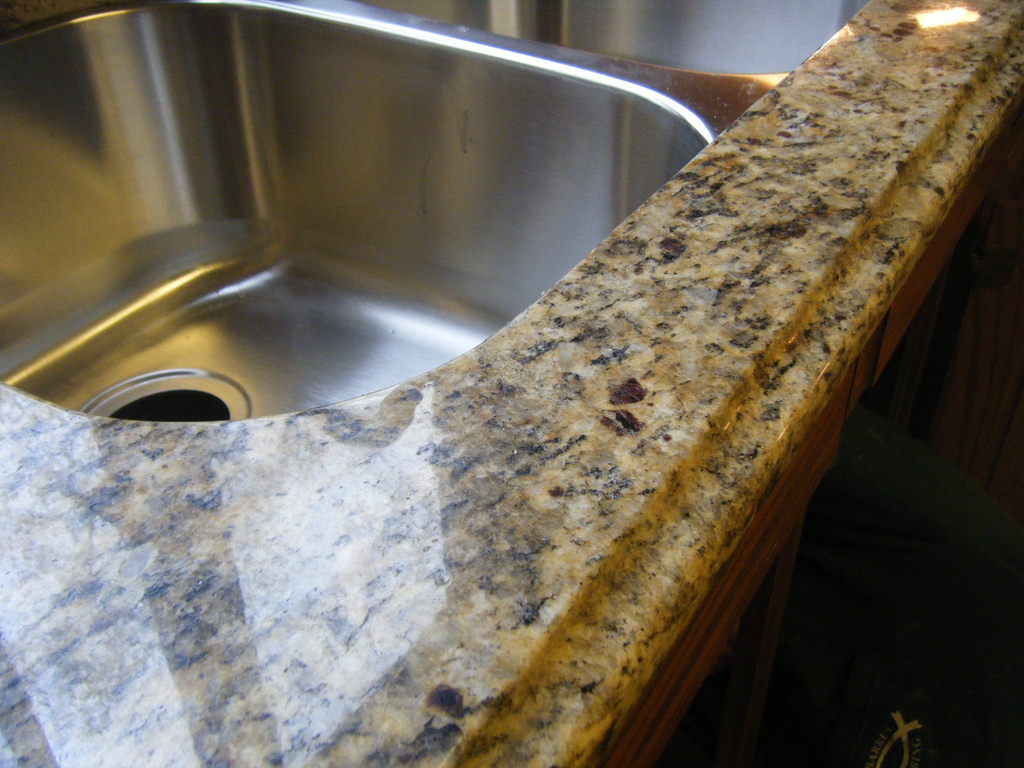
A few years ago, I started looking into purchasing a food processor. “A food processor is a kitchen appliance used to facilitate repetitive tasks in the preparation of food. Today, the term almost always refers to an electric-motor-driven appliance, although there are some manual devices also referred to as ‘food processors’.”
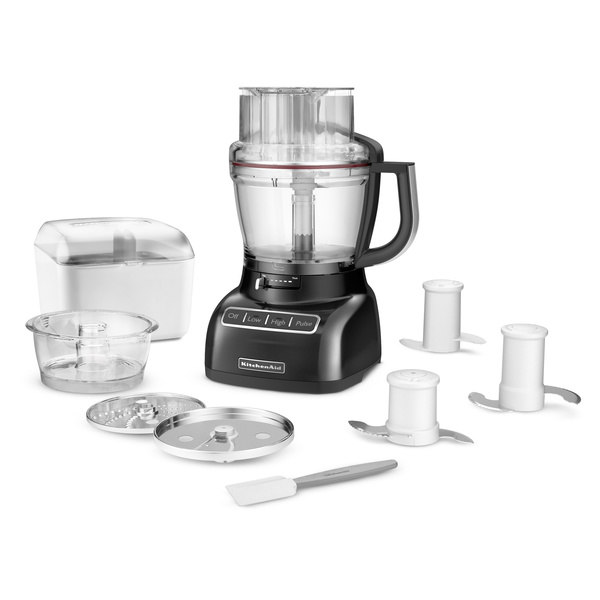 “Food processors are similar to blenders in many forms. The primary difference is that food processors use interchangeable blades and disks (attachments) rather than a fixed blade. Also, their bowls are wider and shorter, a more proper shape for the solid or semi-solid foods usually worked in a food processor. Usually, little or no liquid is required in the operation of the food processor, unlike a blender, which requires a certain amount of liquid for the particles to move around the blade.”
“Food processors are similar to blenders in many forms. The primary difference is that food processors use interchangeable blades and disks (attachments) rather than a fixed blade. Also, their bowls are wider and shorter, a more proper shape for the solid or semi-solid foods usually worked in a food processor. Usually, little or no liquid is required in the operation of the food processor, unlike a blender, which requires a certain amount of liquid for the particles to move around the blade.”
Food processors can be helpful for individuals who have support needs centered around fine motor use in their hands/arms: instead of holding a knife, cutting board, & the food item while trying to cut it, with a food processor one can “feed” food through the “feed tube” and the machine slices it for them. I find my food processor specifically helpful because it can chop my veggies, fruit, and cheeses up for me via the slicing discs that came with my model.
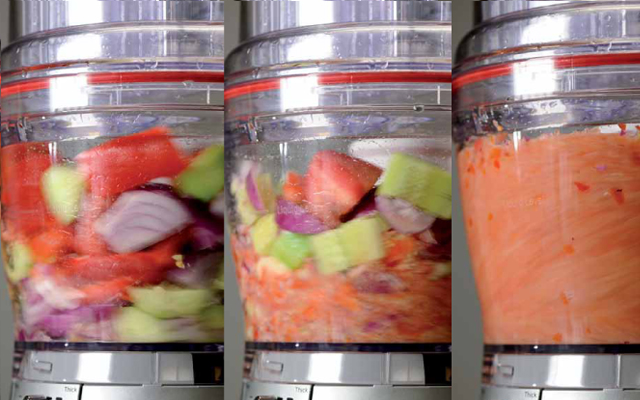 Food processors can also blend food to a puree/liquid consistency for salsas, soups, and for those who may need a liquid form of solid foods.
Food processors can also blend food to a puree/liquid consistency for salsas, soups, and for those who may need a liquid form of solid foods.
- Pro tip: my food processor has “a specially designed locking system with leak-resistant [red] ring that allows you to fill the work bowl to capacity with ingredients.” I really like this feature, but the ring is made of a rubbery material and makes it difficult to open and close. An easy fix I’ve found is to rub a little vegetable oil on the seal & inside of the lid before I use my food processor (the lubrication from the oil doesn’t impact the seal’s ability to keep in liquids).
 In addition to chopping & grating food for me, I use my processor to make bread dough (it has a special blade for this). Kneading bread dough the traditional way can take a lot of continuous upper body strength. With a food processor, one can put the ingredients into the machine, push the button, and in a few minutes have bread dough ready.
In addition to chopping & grating food for me, I use my processor to make bread dough (it has a special blade for this). Kneading bread dough the traditional way can take a lot of continuous upper body strength. With a food processor, one can put the ingredients into the machine, push the button, and in a few minutes have bread dough ready.
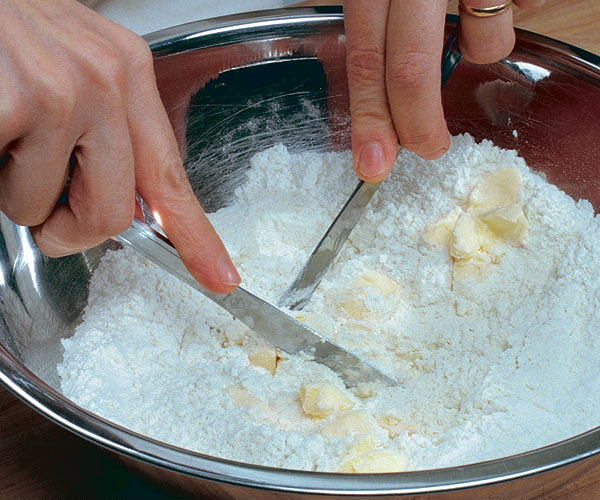 One of my favorite uses for my food processor cutting butter into flour. As I’ve said before in this series, I love baking! For scones, biscuits, & pie crusts I need to use very cold bits of butter (the butter melts in the oven and produces steam which makes the flaky layers many of us love!) Traditionally, a pastry cutter or two knives are used to cut the butter into the flour. This process requires a lot of fine motor control and continuous upper body strength. With my food processor, I measure in my flour, place my stick of butter in, and turn on the machine. After a minute or less I have what I need to bake some up some deliciousness!
One of my favorite uses for my food processor cutting butter into flour. As I’ve said before in this series, I love baking! For scones, biscuits, & pie crusts I need to use very cold bits of butter (the butter melts in the oven and produces steam which makes the flaky layers many of us love!) Traditionally, a pastry cutter or two knives are used to cut the butter into the flour. This process requires a lot of fine motor control and continuous upper body strength. With my food processor, I measure in my flour, place my stick of butter in, and turn on the machine. After a minute or less I have what I need to bake some up some deliciousness!
Big food processors can be expensive and it took me a while to make the decision to buy one. I did a lot of research! While I was deciding, I purchased a smaller one to see if I would really use it. Though this smaller one does not slice food for me, it does chop it. I use it to chop peppers, onions, and cheeses for quiches & omelets and to chop nuts & dried fruit for cookies & breads. And the first pie crust I ever made was with this little processor.
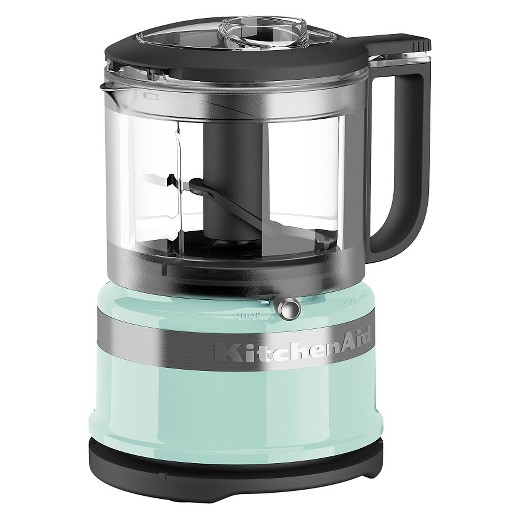
Do you have a food processor? What do you use it for? 🙂
If you missed them, check out Part 1, Part 2, and Part 3 of this AT in the Kitchen series!

